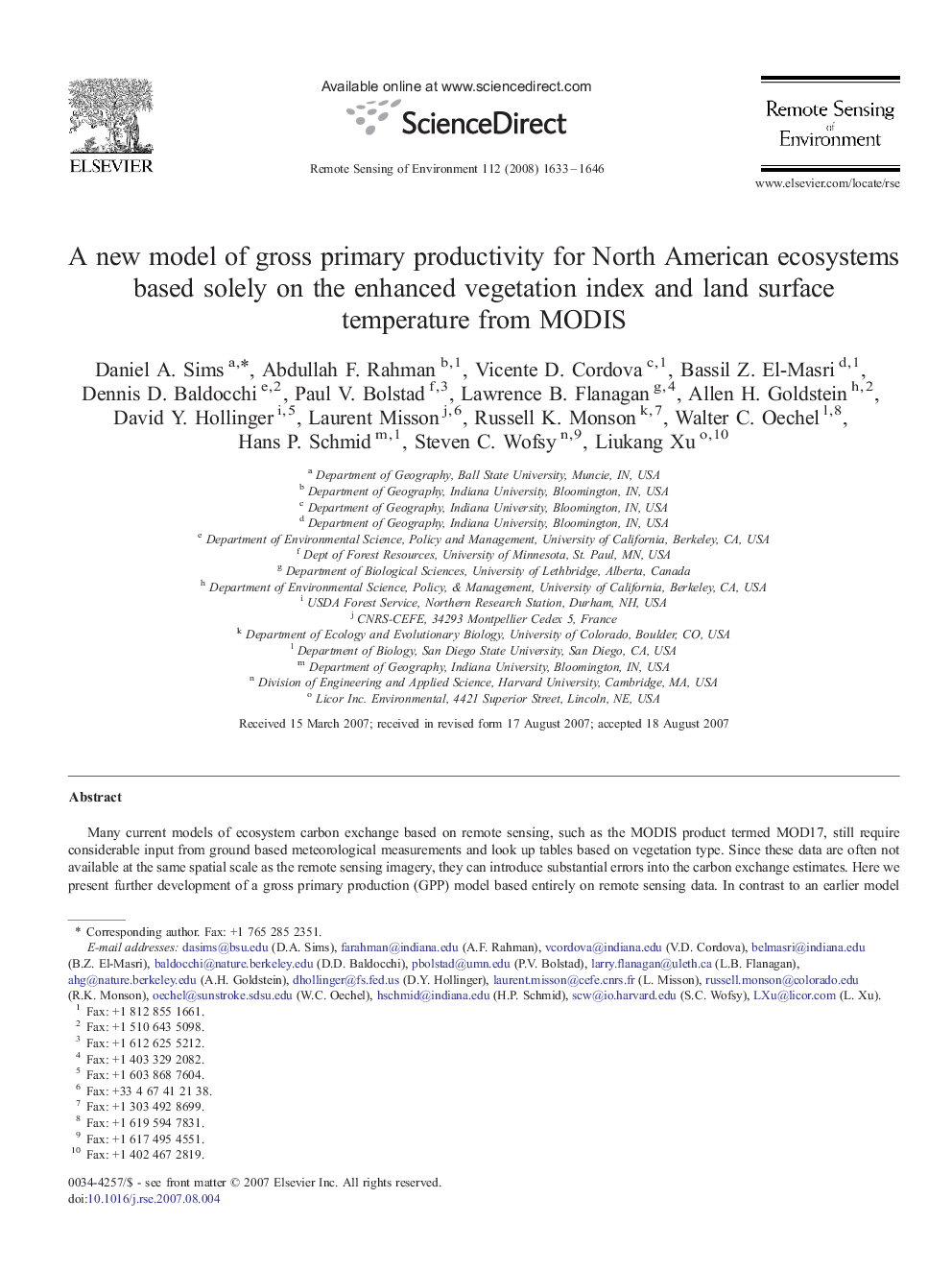| Article ID | Journal | Published Year | Pages | File Type |
|---|---|---|---|---|
| 4460389 | Remote Sensing of Environment | 2008 | 14 Pages |
Many current models of ecosystem carbon exchange based on remote sensing, such as the MODIS product termed MOD17, still require considerable input from ground based meteorological measurements and look up tables based on vegetation type. Since these data are often not available at the same spatial scale as the remote sensing imagery, they can introduce substantial errors into the carbon exchange estimates. Here we present further development of a gross primary production (GPP) model based entirely on remote sensing data. In contrast to an earlier model based only on the enhanced vegetation index (EVI), this model, termed the Temperature and Greenness (TG) model, also includes the land surface temperature (LST) product from MODIS. In addition to its obvious relationship to vegetation temperature, LST was correlated with vapor pressure deficit and photosynthetically active radiation. Combination of EVI and LST in the model substantially improved the correlation between predicted and measured GPP at 11 eddy correlation flux towers in a wide range of vegetation types across North America. In many cases, the TG model provided substantially better predictions of GPP than did the MODIS GPP product. However, both models resulted in poor predictions for sparse shrub habitats where solar angle effects on remote sensing indices were large. Although it may be possible to improve the MODIS GPP product through improved parameterization, our results suggest that simpler models based entirely on remote sensing can provide equally good predictions of GPP.
